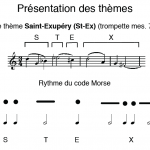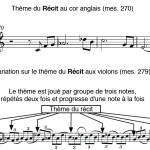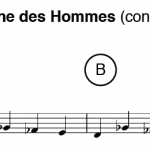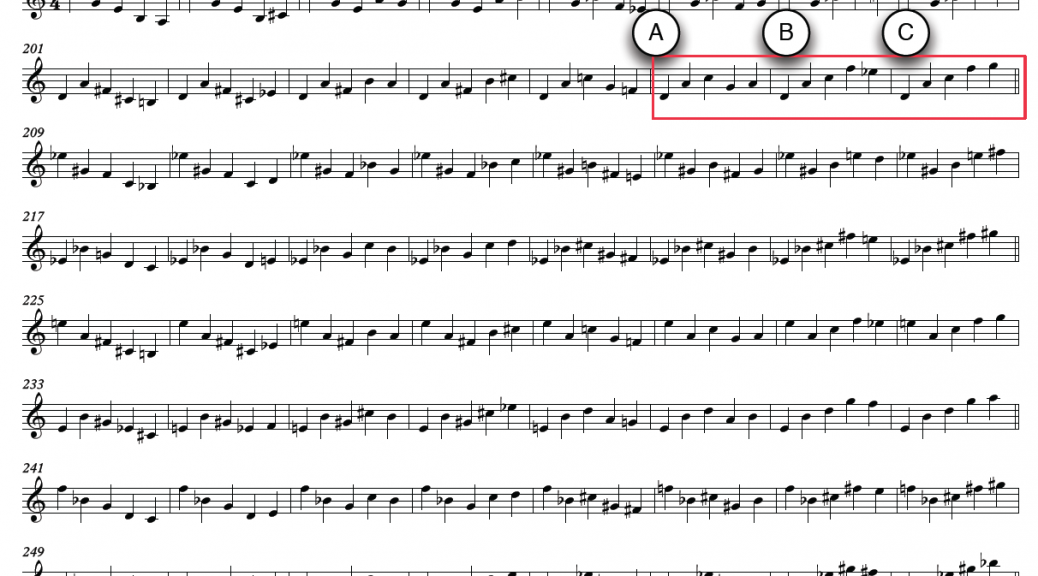Plus que trois jours avant mon départ pour la Charente-Maritime et le Festival Eurochestries. Un rendez-vous avec de jeunes interprètes de Russie, de Turquie, de France, du Brésil et du… Québec!
Ce sera la création de ma pièce en trois mouvements pour orchestre : Saint-Exupéry : de cœur, de sable et d’étoiles.
L’expérience de diriger sa composition est l’occasion d’offrir certaines clés d’éléments qui constituent les fondements de l’œuvre. Comme le temps de répétition ne permet pas d’avoir des échanges poussés sur les motivations de l’écriture et l’exposition de ses composantes, j’ai jugé à propos de mettre à la disposition des musiciens et des curieux un petit document expliquant en partie le travail qui se fait en coulisse lors de l’écriture. Le document lève le voile sur l’origine des motifs qui à leur tour s’assemblent pour former des thèmes qui sont présents dans les trois mouvements.
Chaque compositeur est unique dans sa façon d’aborder la composition. Tellement d’options s’offrent à chacun des créateurs qu’il devient nécessaire de faire des choix qui limiteront le terrain de jeux. Trop d’éparpillement enlève de la force au discours musical et créé de la confusion pour l’auditeur. Ce tri au travers des éléments possibles de composition, la manière d’aborder les problèmes qui se présentent au cours du travail et les solutions choisies détermineront la personnalité de l’écriture et de son auteur.
Chaque pièce musicale possède son histoire, son ADN. La commande du festival s’inscrit dans la thématique Antoine de Saint-Exupéry. J’avais le souvenir du Petit Prince, mais il était essentiel de plonger littéralement dans ses écrits, dans sa vie et son époque. Des éléments forts ressortaient de cette recherche : le pilote, le Petit Prince, l’humaniste, la guerre, le tout lié par l’écriture qui est dense et sans compromis. Une prose qu’il veut sans fioriture. Aller directement au cœur de l’Homme, comme dans son écriture. C’est surtout cet aspect qui m’a littéralement envoûté. On est pris à bras le corps par cette écriture ferme, nettoyé du superflu.
J’ai pris quelques-uns de ces ingrédients pour fixer ma toile musicale.
Les titres de chaque mouvement sont entre parenthèses.
La vie de pilote de Saint-Exupéry, 1er mouvement (Vol de vie)
Le code Morse était en usage, aussi l’ais-je utilisé pour créer certains rythmes associés aux noms suivants : St-Ex, P-38, SOS, fleur. Le Morse est associé aux communications militaire et civile. Saint-Exupéry a embrassé ces deux mondes que ce soit avec l’Aéropostale ou avec l’armée française.

Tout comme dans Courrier Sud, Pilote de guerre et Vol de nuit, la ligne narrative ancrée dans le temps présent s’échappe à l’occasion pour philosopher sur le caractère de l’Homme. Il parle de la bravoure, de l’humilité et de la grandeur de ceux qui portent en eux la pureté de l’âme. Le mot pur est une constante chez lui lorsqu’il parle du ciel. Voler pour lui c’était s’extirper d’une vie sans relief et sans intérêt. Le premier mouvement se termine avec sa disparition du ciel en 1944.
Évocation de la rencontre du Petit Prince et de l’Aviateur, 2e mouvement (Les adieux au Petit Prince)
Les dunes chantantes servent de trame de fond pour l’arrivée de l’avion qui prend forme grâce aux rhombes qui font vibrer l’air. Puis le Petit Prince apparaît. Il se met à raconter les planètes qu’il a visitées et les aventures qu’il a vécues. Celle qui accapare ses pensées, la Rose, est personnifiée par le violon solo. Et c’est pour la retrouver qu’il demandera à retourner chez lui, vers les étoiles. Son retour sera provoqué par la morsure du serpent.

Ainsi donc Saint-Exupéry et le Petit-Prince qui forment ensemble l’écrivain auront quitté la planète pour plonger dans l’éternité céleste…
Mais l’histoire ne fait que commencer!
L’humaniste, 3e mouvement (La Marche des Hommes)
La vie et l’œuvre de Saint-Exupéry sont universelles parce qu’elles parlent du cœur par le biais du vécu et qu’elles touchent aux valeurs fondamentales de l’entraide. Les valeurs qu’il défend sont celles du respect de sois et des autres. Ici, ce sont Citadelle, Lettre à un otage et Terre des Hommes qui soutiennent la structure de la pièce. C’est la Marche des Hommes qui s’unissent pour le bien commun. Des Hommes qui célèbrent le courage, la vie et l’amitié sans condition.

Pour les curieux, voici donc une petite fenêtre sur une de mes façons d’aborder la composition : Presentation et motifs : Saint-Exupéry
 Présentation et motifs : Saint-Exupéry ( 891 kB )
Présentation et motifs : Saint-Exupéry ( 891 kB )





